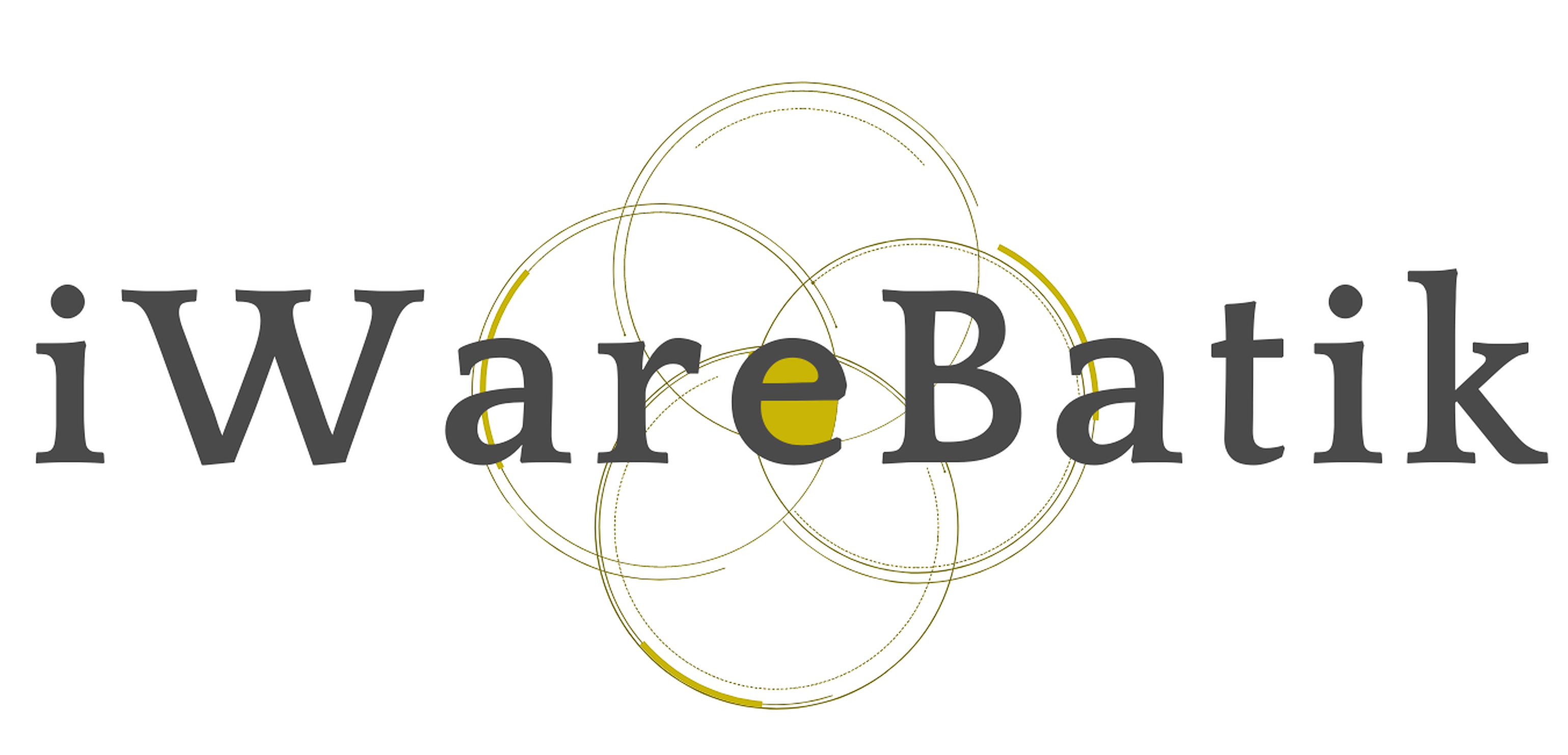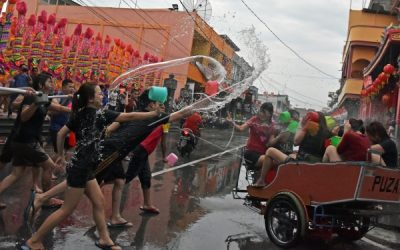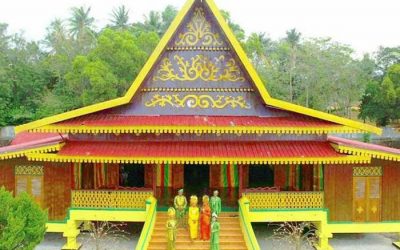Home / Batik Regions – Western Indonesia – Northern Sumatra – Riau Islands / Bintan Trikora Beach
Natural Destination
Embrace the spirit of the place!
Bintan Trikora Beach
If you want to see a stunning view of granite beach, this place offers a great panoramic view. You will feel the tropical nature of turquoise water and white crystal sands while listening to the sound of the waves. Several resorts around the beach offer water tourism facilities such as jet ski and banana boat.
Tourist Attractions in Riau Islands
Cian Cui Festival
Cian Cui Festival is originally an annual tradition of the Chinese descendants in
Daik Lingga Royal Palace
The wonder of the Riau – Lingga royal palace complex consists of
Ksitigarbha Buddhist Temple
The Bodhisattva Ksitigarbha is known as the Buddhist temple with a thousand faces
Riau Islands
Batik Motifs
Ikan tambal
The word “Ikan” refers to fish. The philosophical meaning of Ikan Tambal means is
Tikar Natuna
The Tikar Natuna motif is adapted from the traditional making of pandanus mats in
Gonggong Beruntun
This motif illustrates that a person should maintain a positive attitude and
Gonggong Siput
Gonggong (Strombus Turturella) is one type of sea snail found around
Discover
Indonesian
Batik
Motifs
Lipaq Sabe
Lipaq Saqbe contains a simple geometric classical motif with various flower decorations. This textile is
Pinawetengan
The Pinawetengan Batik pattern was taken from a prehistoric inscription in
Angsa Duo
According to legend, the Angso duo batik motif is a pair of swans that are believed to have led Princess
Enggang Dayak
Local people beliefs that hornbills are an incarnation of the Commander of the Birds. It has supernatural
Malinau Cultural Festival
You will witness a unique competition that might not be found other than in
Ikan tambal
The word “Ikan” refers to fish. The philosophical meaning of Ikan Tambal means is
Singayaksa
The Singayaksa motif comes from the name of a place where Sultan Hasanuddin used to
Tifa Totobuang
The batik motifs illustrate Maluku’s traditional music instrument called
Gentala Arasy
Built as high as 80 meters, the tower also highlights the historical side of
Tikar Natuna
The Tikar Natuna motif is adapted from the traditional making of pandanus mats in
Daun Simpor
This motif is inspired by the Simpor plant (Dillenia Suffruticosa) which is a typical
Hiu Taliyasan
Indonesia is also home to the world’s largest fish, the whale shark (Rhincodon typus). Hiu Taliyasan refers to
Biji Kopi
The coffee seeds motif illustrates the pride of local coffee specialities in
Gigi Haruan Lidi
The Gigi Haruan Lidi motif is taken from the name of the cork fish and is a symbol of
Lok Baintan Floating Market
As you can imagine, the most authentic thing is that you can buy things and even
Pala Salawaku
This motif illustrates the unique weapons of the Maluku region, namely
Tongkonan
Toraja’s traditional house is called Tongkonan. Tongkonan is a place for
Gajah Way Kambas
The motif illustrates the Lampung’s natural reserve, the Way Kambas. it also symbolizes
Jumputan Bintang
The word Jumputan means the tie-dye technique, while the word “Bintang” refers to
Dayak Taghol
Dayak Taghol has a distinctive style of four curved lines and small dots. This motif represents
Ukir Sentani
The Ukir motif is a batik motif that is inspired by various traditional Sentani wood carvings
Tubo Kelapa
Coconut tree is a symbol of a good character and strong mentality. It illustrates the more success a person, the more
Mahkota Siger
Siger is the crown of a noblewoman in ancient time. It is a symbol of femininity, strength, and
Pohon Hayat (Tree of Life)
The Batik motifs in Lampung are dominated by the acculturation of Buddhist and
Insang Ikan
Insang refers to the gills of the fish. This is a typical pattern of Malay ethnic who inhabits
Gonggong Siput
Gonggong (Strombus Turturella) is one type of sea snail found around
Keluak Daun Pakis
The word “Keluak” is a Minang language which means twisted or tangled. The Motif of
Gamolan
This motif illustrates Gamolan, a bamboo musical instrument of Lampung that is
Taiganja
Taiganja is a precious gold pendant that shows the social status of the Kaili family. It is
Gorga Simeol-Meol
The Gorga Simeol-meol is a pattern of plant tendrils. it is regarded as a symbol of longevity and
Bale Lumbu
This motif signifies the welfare of the ancient Sasak society. Bale also symbolizes the
Buketan Bali
The Balinese bouquet (Buketan Bali) is a floral arrangement and the name is
Teguh Bersatu
This batik motif shows the strength of the people of Kupang. It also represents a sense of
Wirasat
Wirasat or divine inspiration is a gift from God. This inspiration is symbolized by
Tenun Bima
The motifs are adopted from Bima woven textile. This pattern has received a great
Kuda Kupang
Horses symbolize wealth. It contains noble values of virtuous characters that bring
Salakanagara
Salakanagara batik motif illustrates the first kingdom in the Betawi land
Paqbarre Allo
The word “Barre” means round and “Allo” means the sunlight. This motif is interpreted as
Pati-Pati Pinehiku
It symbolizes the hierarchy in society and the social status of the Mekongga
Kerawang Tegak Aceh
The Vertical Upright (Kerawang Tegak) Motif symbolizes a person who has a strong
Parang Rusak
Another meaning behind this motif is an unconquerable spirit, symbolized by
Awan Berarak
Awan Berarak is a combination of Dayak motifs and Malay patterns. The word ‘Awan Berarak’ means the
Burung Bidadari
Bidadari birds are endemic birds in Halmahera. This motif represents an
Kawung
The Kawung motif was created by Sultan Agung Hanyokrokusumo (1593 – 1645) as a symbolic gift for
Rangkiang
The word “Rangkiang” refers to the rice granary in the Minangkabau language. It symbolizes
Kasih Tak Sampai
‘Kasih Tak Sampai’ is an idiom in the Indonesian language which refers to
Merak Ngeram
The hatching peacock motif has a very deep meaning which refers to the sacrifice and
Leuit Sijimat
This motif reflects the daily activities of the Baduy tribe in Banten. The main ornaments of batik motif consist of:
Honai
The Honai is inspired by the traditional house of the Papuan community living in
Kaharingan
The Kaharingan or ‘tree of life’ based on the Dayak tribes’ belief system. This tree symbolizes
Desa Na Tolu
The Desa Na Tolu characteristic pattern symbolizes the Batak philosophy of existence and
Bintik Tujuh
The Bintik Tujuh (Seven Dots) motif has 7 white spots and green color gradation as
Gurdo Solo
Gurdo or garuda bird is the mount of the Indian god Vishnu. As the Sun Bird,
Pucuk Rebung Riau
Pucuk Rebung symbolizes heart determination in achieving goals, good luck, and
Tabir Tanjung
Tanjung flower is a type of Cherry tree flower, which is commonly found in
Lontara
The Lontara script itself is a typical ancient script of Bugis and Makassar communities. History records that
Kaganga Tanah Rejang
If Batik Besurek combines Arabic calligraphy motifs, then the Kaganga batik takes
Besurek Rembulan
This batik illustrates praise for God who created the wonderful universe
La Galigo
La Galigo is a literary work of the Buginese Epic that has 300 thousand epic lines. It is considered even
Sandeq
Sandeq Boat is a symbol of the maritime importance of the West Sulawesi region. The greatness of
Sido Mulyo
Sidomulyo is one of the classical motifs, which is specifically used for the bride’s costume in
Bekantan Pakis
This motif represents Pakis Haji (Polystichum setiferum), an endemic plant in
Bultiya
The word ‘Bultiya’ is an acronym of the three major tribes in North Kalimantan, namely
Gumin Tambun
Based on Hindu mythology, this motif symbolizes lucks, abundant wealth, and
Tanah Liek
The word “Tanah Liek” refers to clay in Minang language. It is also known as
Gonggong Beruntun
This motif illustrates that a person should maintain a positive attitude and
Tangerang Herang
Tangerang Herang motif is a symbol of Tangerang city. The Tangerang Herang batik motif consists of
Prada Papua
The word “Prada” in the Javanese-Indonesian dialect means a batik textile that
Karawo Pinang
Pinang refers to the Palm areca tree. This motif is considered as the original






